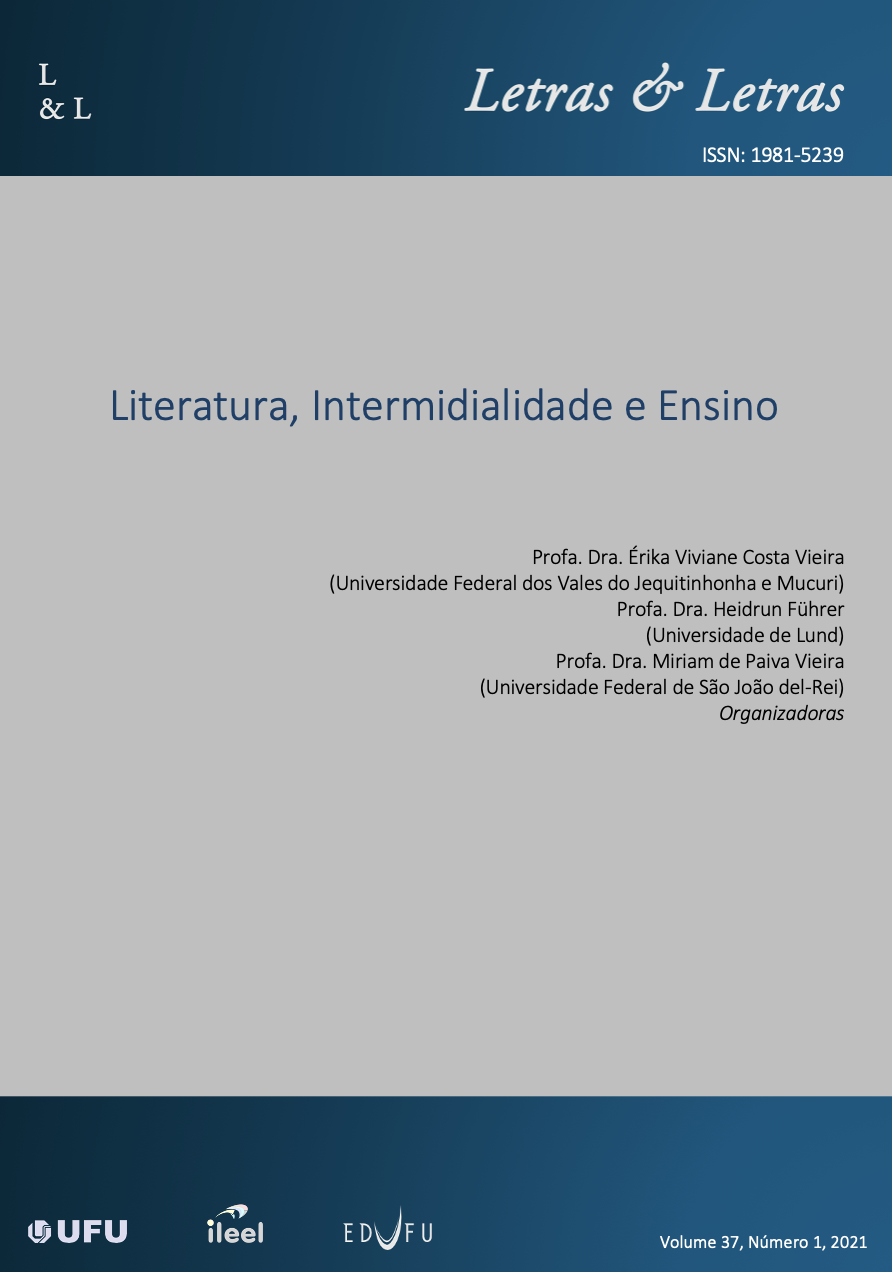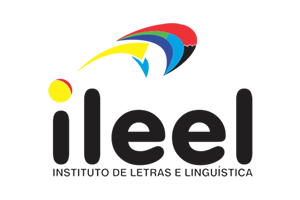Narrativa transmídia
Uma proposta para os multiletramentos no Ensino Fundamental
DOI:
https://doi.org/10.14393/LL63-v37n1-2021-18Palavras-chave:
Narrativa, Transmídia, Transmidialidade, Multiletramentos, EnsinoResumo
No presente artigo, apresentamos os resultados de uma pesquisa-ação que propõe o uso da Narrativa Transmídia para o ensino de língua portuguesa no Ensino Fundamental. A aplicação pedagógica da Narrativa Transmídia pode oferecer estratégias para a criação de atividades que permitam aos estudantes desenvolver habilidades relacionadas aos multiletramentos, conceito proposto pelo Grupo Nova Londres (1996) e preconizados pela BNCC. A análise do processo e do produto final da narrativa transmídia produzida por estudantes de uma escola pública da capital paulista indica que a aplicação pedagógica da Narrativa Transmídia pode mobilizar, de modo coordenado e significativo, conhecimentos acerca da tipologia textual narrativa (ADAM, 2019) e sobre a cultura digital, além de desenvolver habilidades de escrita e leitura sobre os mais variados gêneros textuais (BAKHTIN, 1997), promovendo o protagonismo e a criticidade dos estudantes por meio de atividades coletivas e colaborativas.
Downloads
Referências
ADAM, J. M. Textos: tipos e protótipos. São Paulo: Contexto, 2019.
ALMEIDA, M. E. B.; VALENTE, J. A. Integração currículo e tecnologias e a produção de narrativas digitais. Currículo sem Fronteiras, v. 12, n. 3, p. 57-82, Set/Dez, 2012. Disponível em: http://www.curriculosemfronteiras.org/vol12iss3articles/almeida-valente.pdf. Acesso em: 20 abr. 2020.
BAKHTIN, M. Os gêneros do discurso. In: BAKHTIN, M. Estética da criação verbal. 2. ed. São Paulo: Martins Fontes, 1997. p. 277-326.
BRASIL. Ministério da Educação. Base Nacional Comum Curricular: Educação é a base. Brasília: MEC, 2017. Versão final. Disponível em: http://basenacionalcomum.mec.gov.br. Acesso em: 5 maio 2019.
BRUNER, J. Realidade mental, mundos possíveis. Tradução por Marcos G. Domingues. Porto Alegre: Artes Médicas, 1997.
BRUNER, J. A Construção narrativa da realidade. Tradução por Waldemar Ferreira Netto. Critical Inquiry, v. 18, n. 1, p. 1-21, 1991. Disponível em: https://www.academia.edu/4598706/BRUNER_Jerome_A_construção_narrativa_da_realidade. Acesso em: 28 maio 2019.
COSTA, A. C. G. Protagonismo juvenil: adolescência, educação e participação democrática. Salvador: Fundação Odebrecht, 2000.
CLÜVER, C. Intermidialidade. Pós: Revista do Programa de Pós-graduação em Artes da EBA/UFMG, v. 1, n. 2, p. 8-23, 16 jan. 2012.
CRISTOVÃO, V,; DURÃO, A.; NASCIMENTO, E. Debate em sala de aula: práticas de linguagem em um gênero escolar. In: ENCONTRO DO CELSUL, 5., Curitiba. Anais... Curitiba, 2003. p. 1436-1441.
EZCÁMEZ, J.; GIL, R. O protagonismo na educação. Tradução por Neusa Kern Hickel. Porto Alegre: Artmed. 2003
FARACO, C. A. Linguagens e diálogos: as ideias linguísticas do círculo de Bakhtin. São Paulo: São Paulo: Parábola Editorial, 2009
JENKINS, H. Convergence? I diverge. Technology Review, v. 104, p. 93, 2001. Disponível em http://web.mit.edu/~21fms/People/henry3/converge.pdf. Acesso em: 9 jun. 2020.
JENKINS, H. Cultura da convergência. 1. ed. São Paulo: Aleph, 2009.
JENKINS, H. Transmedia education: the 7 principles revisited. henryjenkins. 2010. Disponível em: http://henryjenkins.org. Acesso em: 9 jan. 2019.
KOCH, I. G. V. Hipertexto e construção do sentido. Alfa: Revista de Linguística, v. 51, n. 1, 2007
KRESS, G. Multimodality. A social semiotic approach to contemporary communication. New York: Routledge, 2010.
LEMKE, J. L. Letramento metamidiático: transformando significados e mídias. Trab. Linguist. Apl. Campinas, v. 49, n. 2, p. 455-479, dez. 2010. DOI: https://doi.org/10.1590/S0103-18132010000200009.
NEW LONDON GROUP. A pedagogy of multiliteracies: Designing social futures. Harvard Educational Rev., v. 66, p 60-92, 1996.
PROPP, V. I. Morfologia do conto maravilhoso. Rio de Janeiro: Forense-Universitária, 2001.
ROJO, R.; MOURA, E. Gêneros discursivos do Círculo de Bakhtin e multiletramentos. In: ROJO, R. Escol@ conectada: os multiletramentos e as TICs. São Paulo: Parábola, 2013. p. 13-36.
Downloads
Publicado
Edição
Seção
Licença
Autores que publicam nesta revista concordam com os seguintes termos:
Autores mantêm os direitos autorais e concedem à revista o direito de primeira publicação, com o trabalho simultaneamente licenciado sob a Creative Commons Attribution License que permitindo o compartilhamento do trabalho com reconhecimento da autoria do trabalho e publicação inicial nesta revista.
Autores têm autorização para assumir contratos adicionais separadamente, para distribuição não-exclusiva da versão do trabalho publicada nesta revista (ex.: publicar em repositório institucional ou como capítulo de livro), com reconhecimento de autoria e publicação inicial nesta revista.










